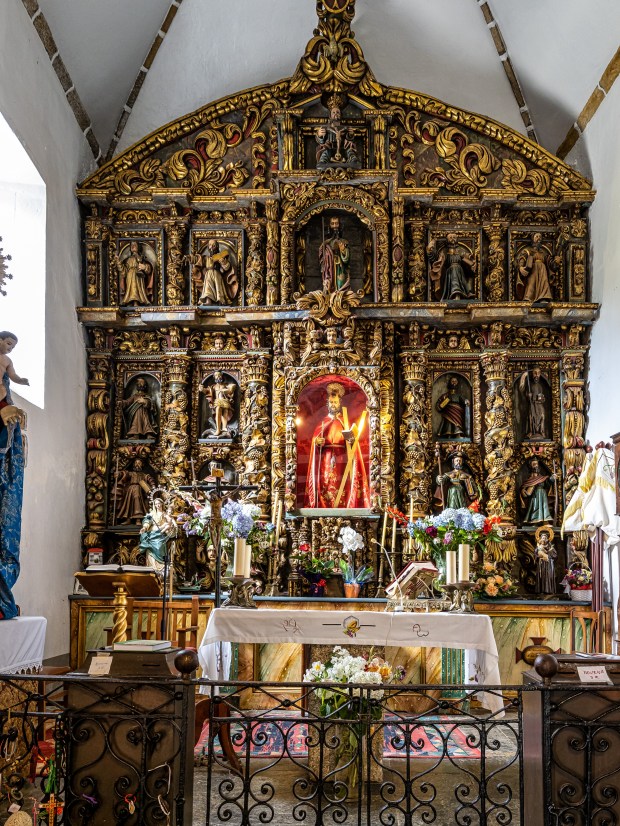In the Sierra de Capelada, by the cliffs of northern Galicia, lies the very small village of San Andrés de Teixido. With a population of just 49 as of 2020, this seemingly unimportant hamlet holds significant spiritual value – far beyond its modest size. The village is famous for its sanctuary, the Chapel of San Andrés, which is central to one of Galicia’s deepest religious traditions.
The name “Teixido” comes from the Galician term for yew trees, “teixos,” which were once abundant in the area. However, the village is best known as a place of pilgrimage. The Galician saying vai de morto quen non foi de vivo (“He who did not go in life will go in death”) claims that those who miss the pilgrimage in life are destined to make it after death.
The pilgrimage route to San Andrés de Teixido, though less well known than the Camino de Santiago, is also steeped in ancient customs. Pilgrims traditionally carry a stone to place it on one of the many milladoiros – piles of stones found along the way. These piles of stones, unique to the region, are traditionally believed to be witnesses testifying at the Last Judgment, documenting the pilgrim’s vow to visit the shrine. Between the neighboring town of Veniño and Teixido, more than twenty milladoiros have been counted, many of which have been meticulously maintained over the centuries.

The origins of this pilgrimage are believed to date back to pre-Christian times – even back to the Iron Age. However, the first documented reference appears in a will dated 1391. In this will, a noblewoman from Viveiro promised to offer a candle at the shrine’s altar. The sanctuary itself was founded in the 12th century, initially under the protection of the Counts of Traba. In 1703, the renowned Spanish Benedictine scholar Father Sarmiento referred to it as a small convent, which later developed under the Order of St. John of Jerusalem.
Pilgrims going to Teixido also visit the Fonte dos Tres Caños, a nearby spring known for its miraculous properties. After drinking from the spring, pilgrims traditionally throw a piece of bread into the water. If the bread floats, legend claims that they will return to San Andrés the following year.
Despite its size, San Andrés de Teixido remains a main pilgrimage destination in Galicia. Its rugged beauty and deep-rooted traditions offer a pilgrimage experience that invites reflection and connection to a rich spiritual heritage.



